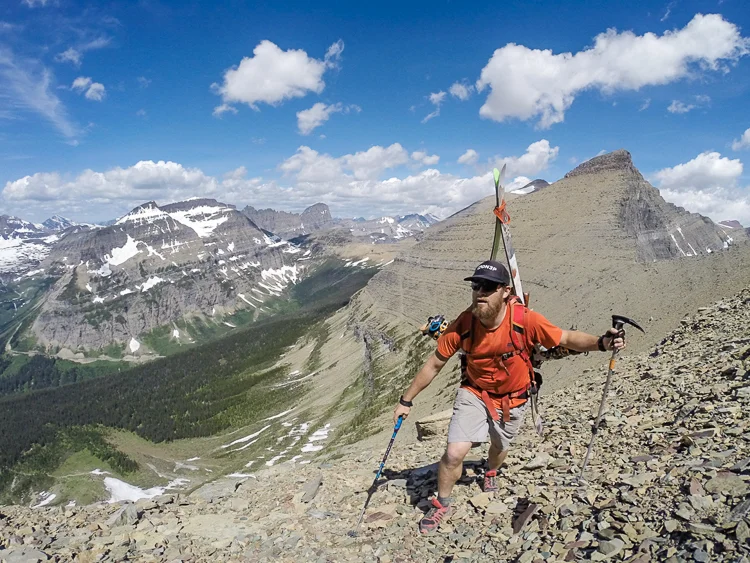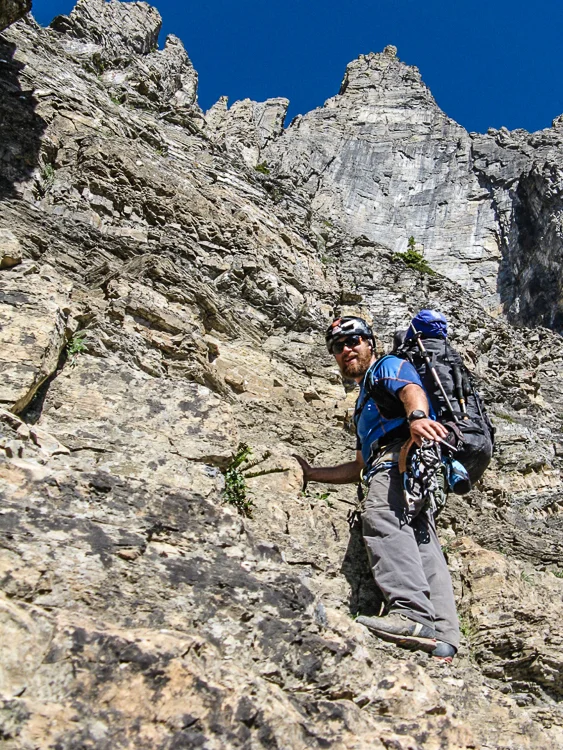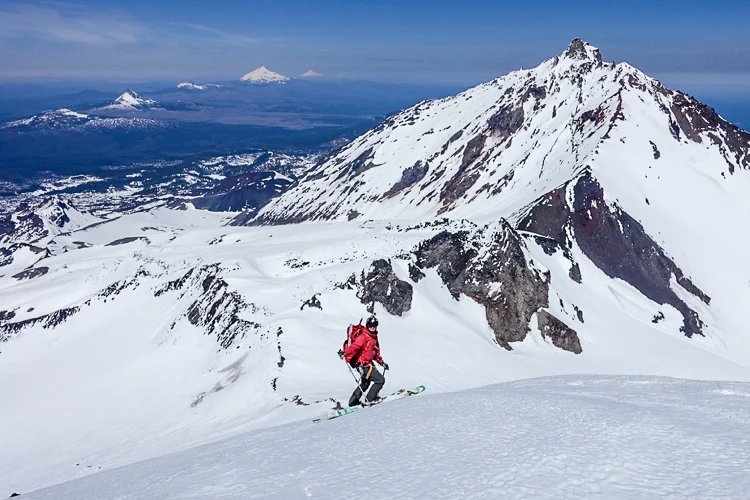By: RIDGE Ski Coach, David Steele
David searching for summer snow fields in Glacier N.P. Photo: David Steele
A few years back, the gear in my car could have given a straightforward answer to what I was up to: downhill ski boots, a day pack, only one ice axe. More recently, the trunk and top box of my car have gotten increasingly strange. Running shoes and ski boots now vie for space with different ropes, axes, skis, backpacks, and overnight gear. Rock protection stacks atop tents of different sizes, sleeping bags for different temps. And all that gear chaos belies one simple reason: the lines are blurring.
David has the audacity to seek out alpine routes that require vertical travel with large packs. Photo: Jack Beard
Running gives speed to link up peaks that you couldn’t do by simply hiking. Skiing allows snow traverses to cover miles you’d otherwise have to walk. Mountaineering skills build safety into both disciplines when things get vertical. Training in multiple areas keeps things interesting and avoids repetitive fatigue, while learning to eat right and fuel well offers staying power and safety when travel, as it always does, gets harder. Maintaining gains and pushing onward happens better with proper recovery.
Quite simply, the alpine is an arena best traveled by those who can avail themselves of the most methods and tools. Hike to the snow line, skin until it’s steep, crampon up top, then ski down and run back out—skillful adaptation to moving efficiently in any terrain is the key. This comes from my own goals and aspirations in the mountains, and flows effortlessly into the curriculum and coaching at Ridge. We’re training mountain athletes who can safely cook, climb, and shred their way back down. They’re putting together the same systems and thinking I make use of on difficult first descents or long summer traverses in the alpine, and if you want proof, just compare the campus gear room to the back of my car: same stuff, same goals.
David taking a break- mid run- on The Middle Sister in Oregon. Photo: Brody Leven





